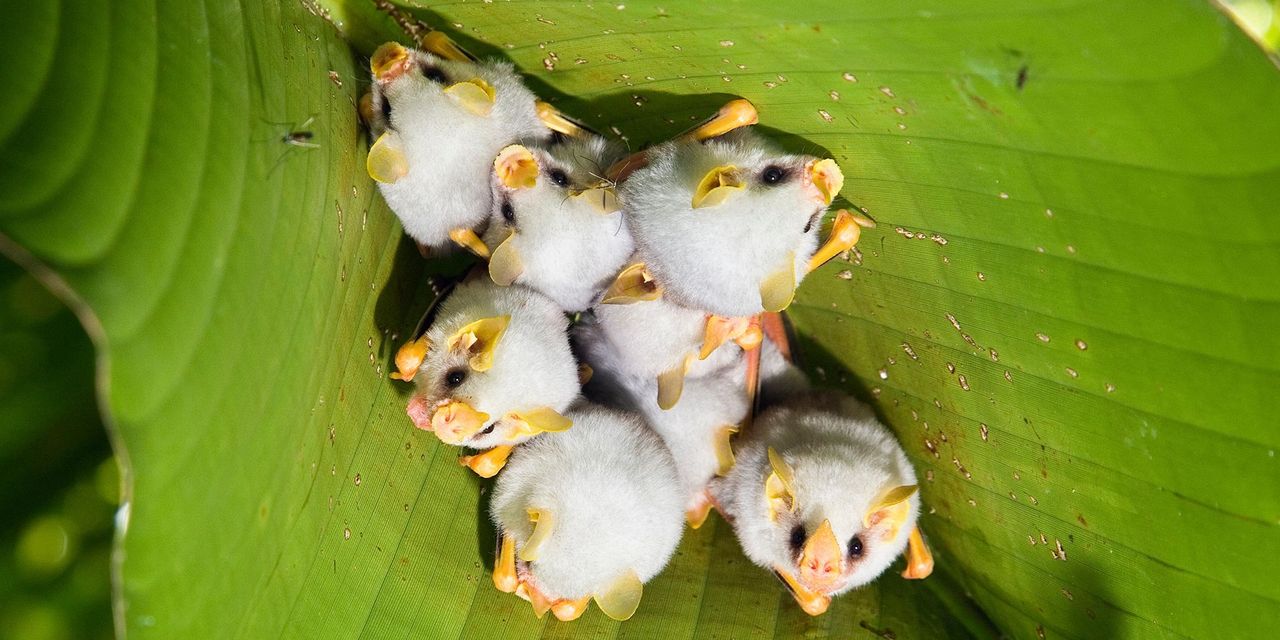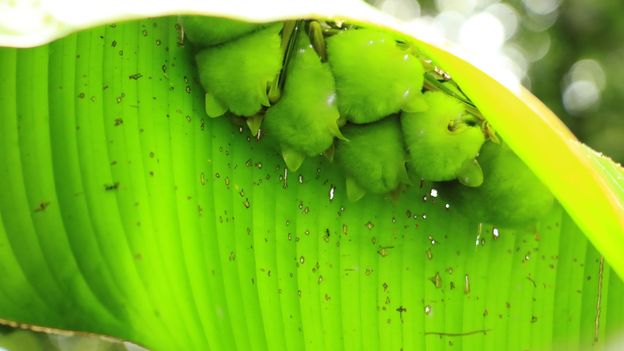
I found this article on the BBC News website and wanted to share it!
Described as "cute" even in formal scientific journals, Costa Rica's tent-making bats defy negative stereotypes by living in harmony with each other and inspiring conservation.
A report By Reena Shah 27 January 2021
I drove to Sarapiquí, a little-known region in Costa Rica, during a brief respite of dry weather between Hurricanes Eta and Iota in search of a miniature tropical bat. Here, conservation efforts big and small are fighting to preserve a lowland tropical rainforest with astonishing biodiversity, including one of the smallest and most adorable mammals: Ectophylla alba, also known as the Honduran white bat or Caribbean tent-making bat.
It was impossible not to coo
I'd been warned that these bats aren't always easy to find. They live in selected lowland rainforest habitats from Honduras to eastern Panama. In Costa Rica, I tried my luck at Tirimbina Rainforest Center, a 345-hectare private reserve. At first glance, the neighbourhood seemed an unlikely locale for a rainforest. Pineapple plantations dominated on all sides and spiky green shrubs stretched to the horizon. But tucked away behind an unassuming green gate was an ecological oasis that protects nearly 4,000 species of plants and animals.
My guide, Emmanuel Rojas Valerio, led me across a 270m chain-linked suspension bridge over the roaring Sarapiquí River. In the middle of the river was the small island of "La Isla", once a biologist's heaven for studying the bats due to its abundance of heliconia plants. The tent-making bats chew a perforated ridge into heliconia leaves, similar in shape to banana leaves, to form tents where they roost during the day. The plants are easily shaken, which is one of the reasons they make suitable homes. The leaves become alarm bells as soon as predators, such as snakes, owls and opossums, touch them, giving the bats a chance to escape.
In 2015, severe flooding wiped out La Isla. Though, by the look of it now, I wouldn't have known. Enormous cecropia and balsa trees had already grown taller than the bridge, and dense vegetation obscured the island floor. The tiny bats, however, haven't yet returned. Scientists speculate that the understory is too crowded with new growth, making it hard for them to easily leave their tents.
But we were lucky that day. Inside the reserve, just a few hundred meters after the bridge, Rojas Valerio pointed out fraying empty tents along our trail, then led me into marshy woods with mud up to our ankles. In the middle was a neatly folded leaf with a brown ridge on top. Underneath, the bats looked like a handful of fuzzy green seeds, a surprisingly effective form of camouflage. When Rojas Valerio turned on his torch, they transformed into white cotton balls with yellow-orange noses and ears. A shiver ran through the upside-down colony of five females, one male and a baby. One opened its eyes and stared at us, dewy black slits embedded in snowy fur.
It was impossible not to coo. One of the smallest fruit-eating bats in the world, the tent-making bat has an average wingspan of just 10cm and weighs roughly 6g – about a teaspoon-and-a-half of sugar. According to Bernal Rodriguez, bat biologist and professor at the University of Costa Rica, these diminutive creatures are the only known mammals with an accumulation of carotenoid pigment, the chemical that accounts for the bright yellow of their ears and nose. The carotenoid comes from peels of the bats' food: cranberry-like figs from a particular tree, Ficus columbrinae, that grow near rivers. Recent studies by Rodriguez and his team suggest that the colouring is a trait of sexual selection. Males that are larger and well fed have brighter colours, a feature that attracts females.

The bats build tents from heliconia leaves where they roost during the day (Credit: Emmanuel Rojas Valerio)
Rojas Valerio explained that the colony we found will leave their roost at sundown to travel nearly a kilometre to the riverbank for figs, and only figs. "They don't always come back to the same tent," he said. "They make many houses where they can stop along the way. But always in heliconia leaves."
It is nice to be able to bring a nice story once in a while!
The blog song for today is: "Happy" by Pharrell Williams
TTFN



No comments:
Post a Comment